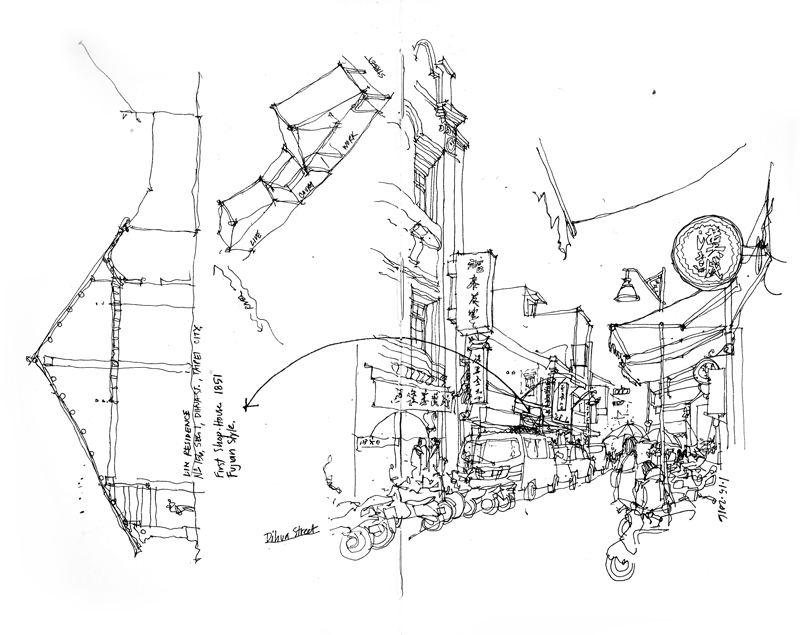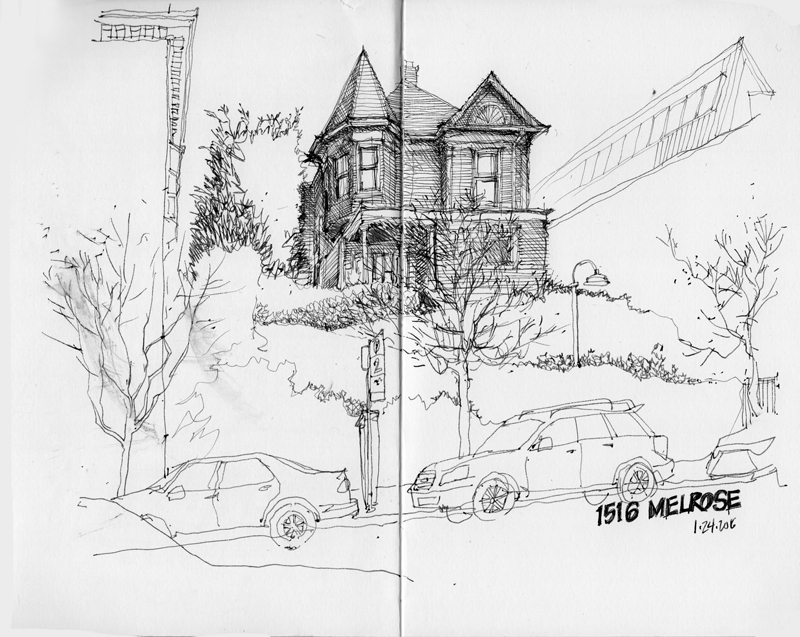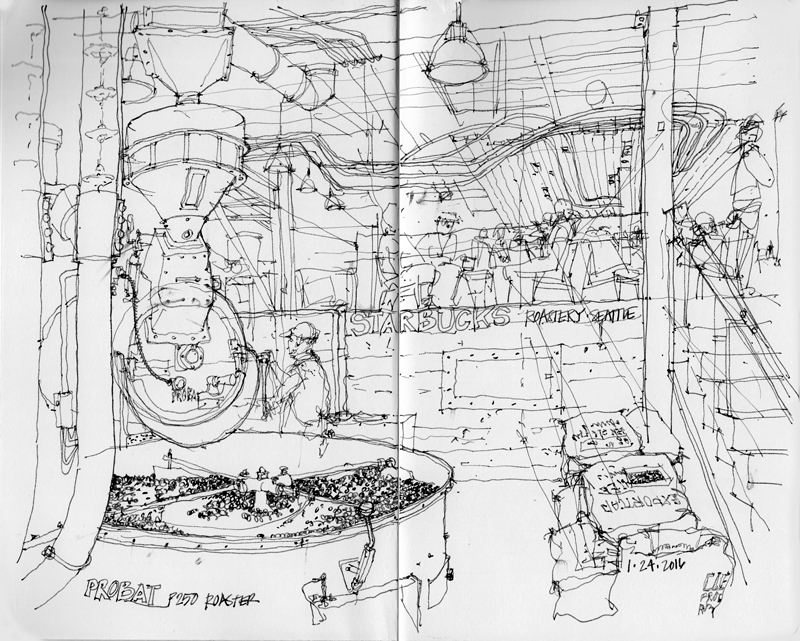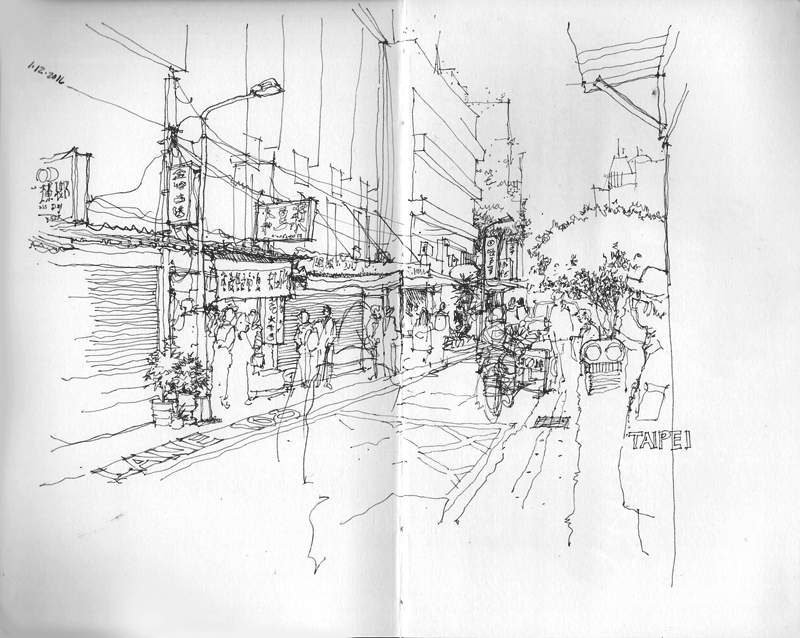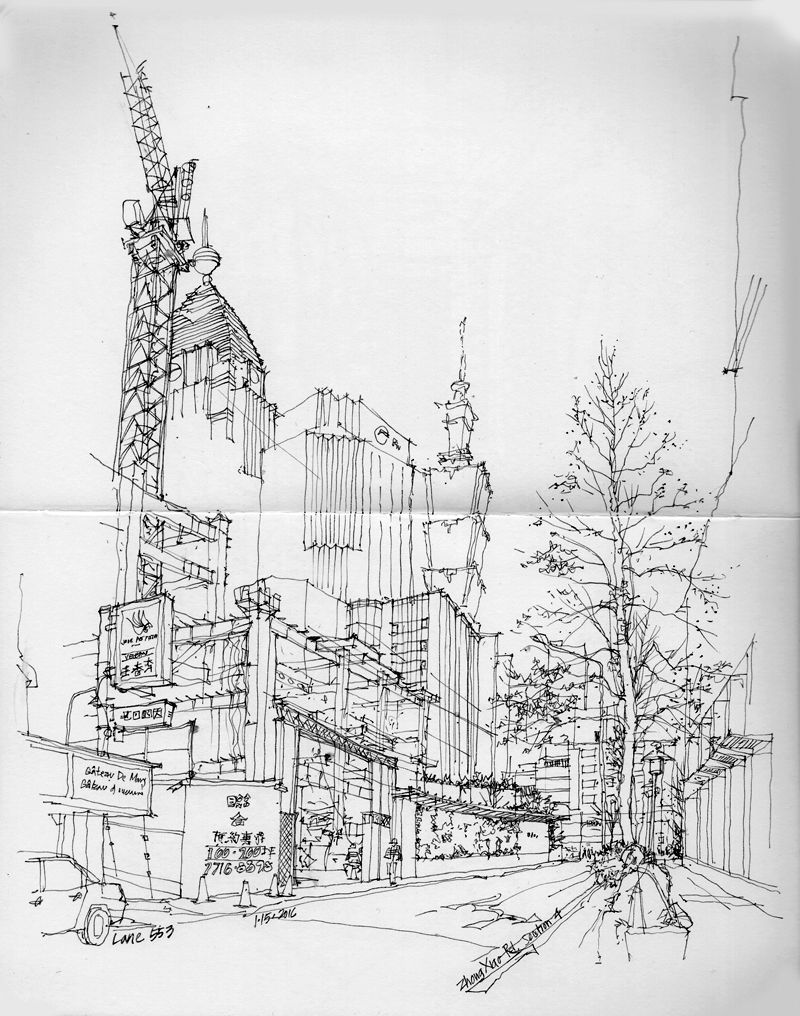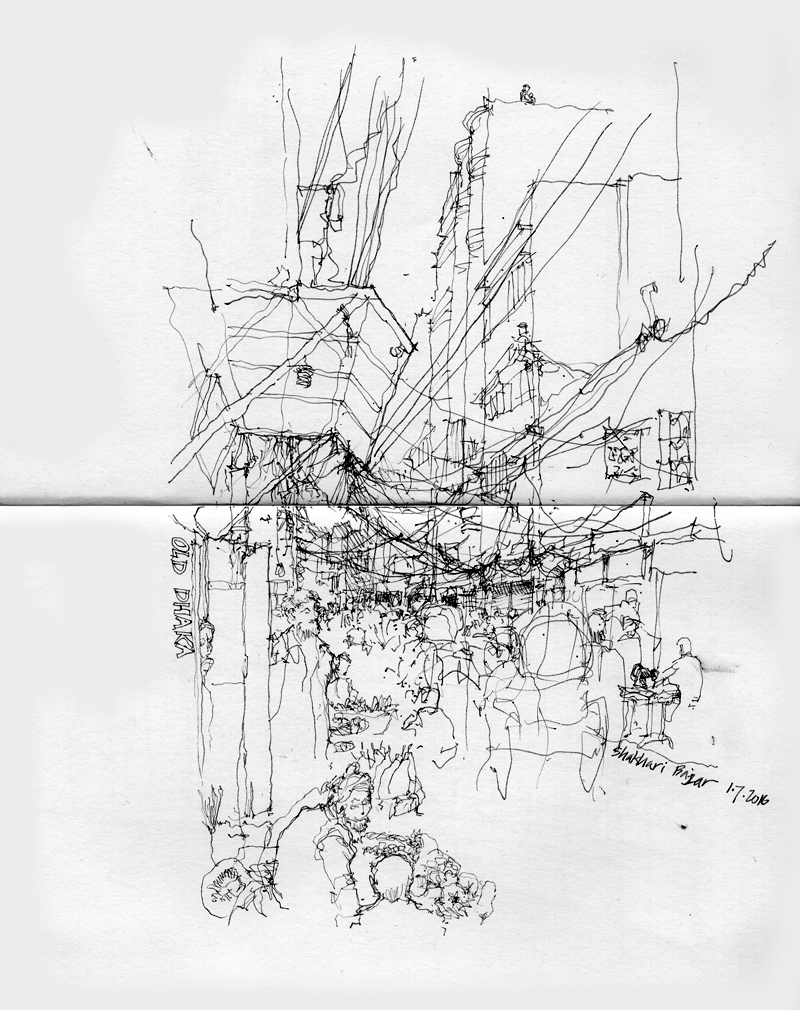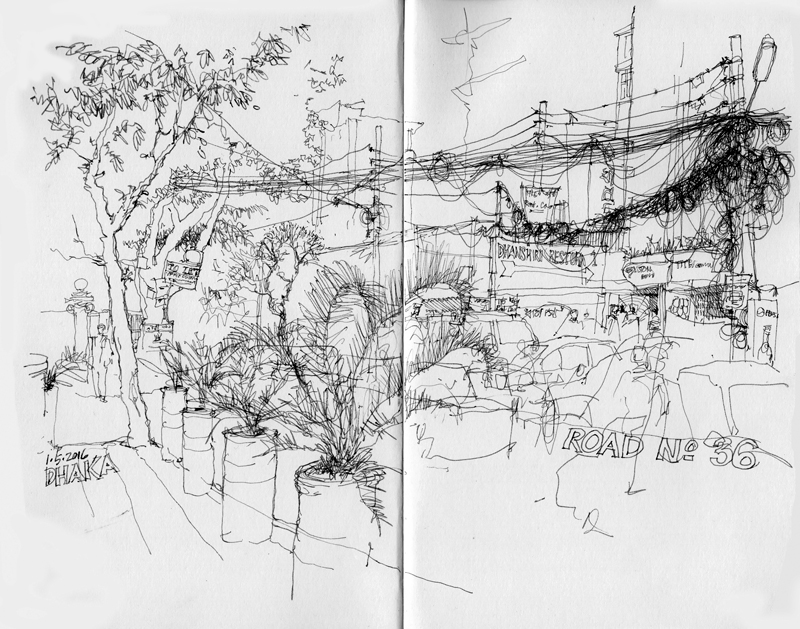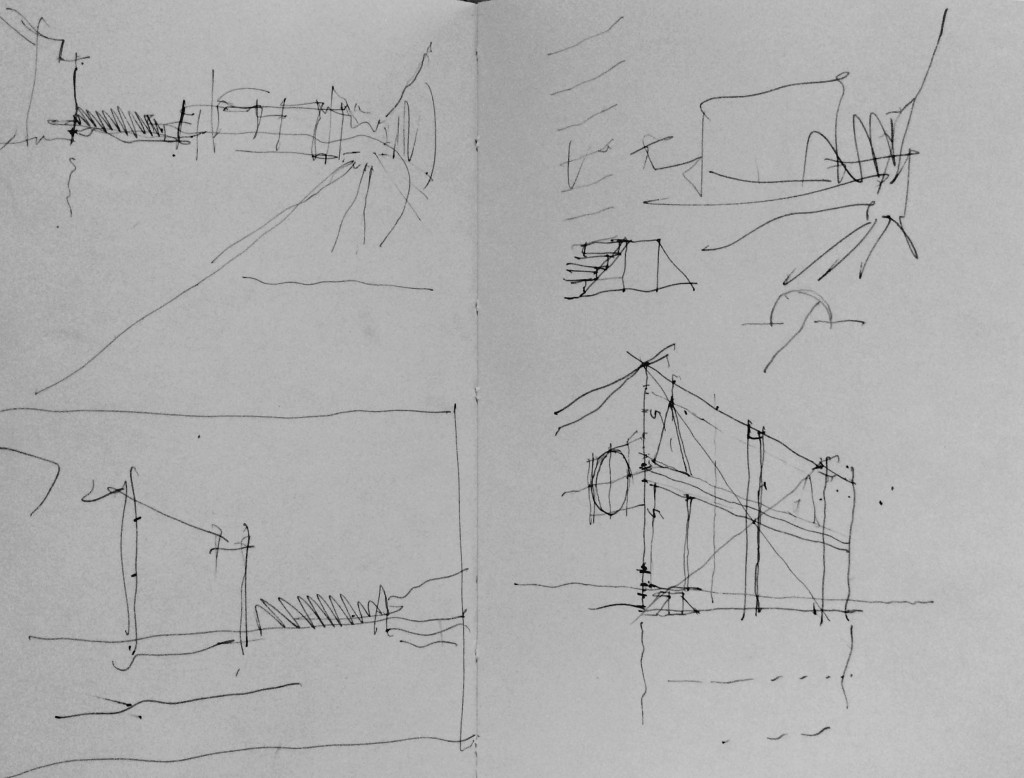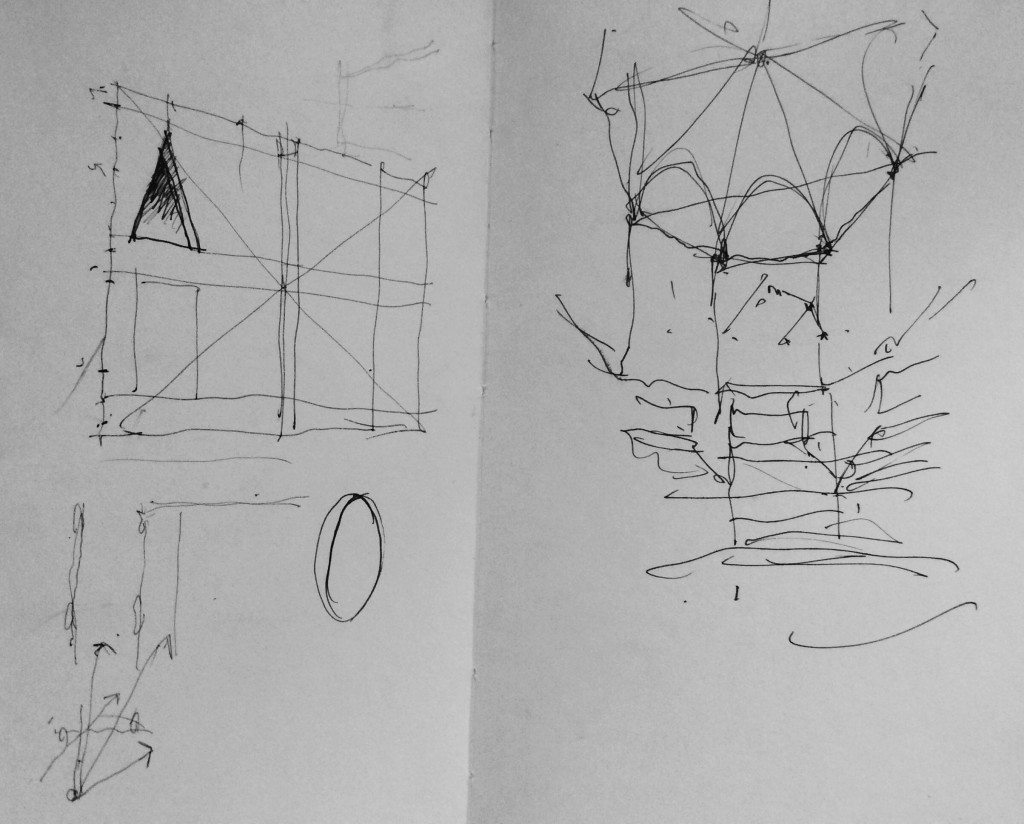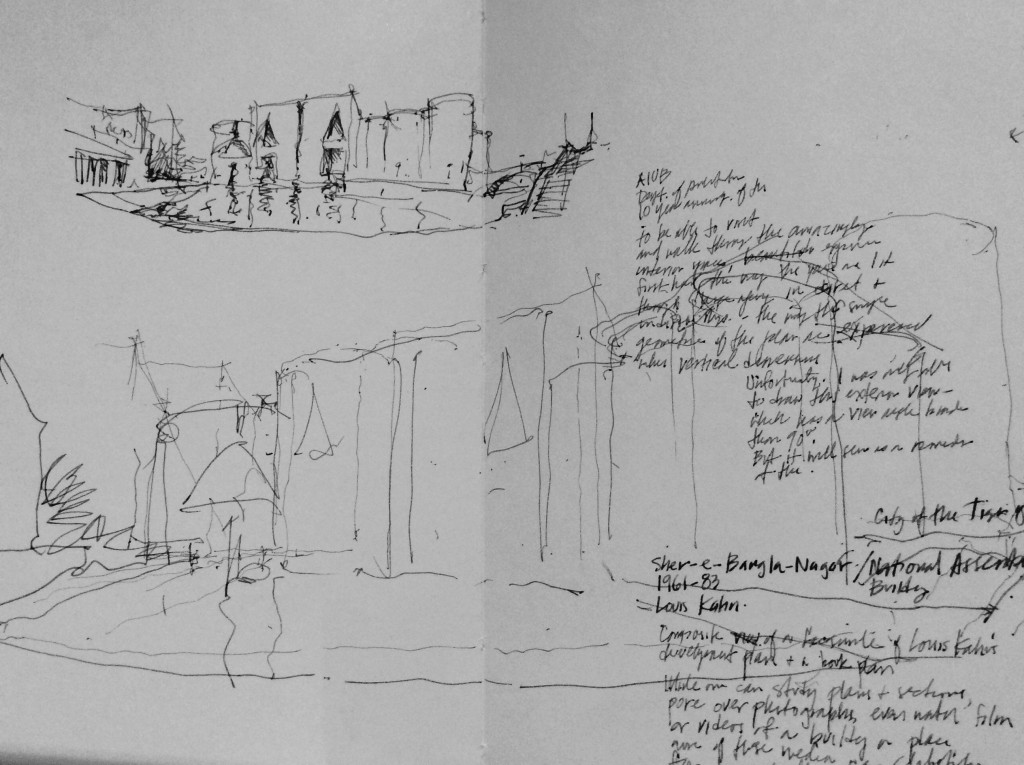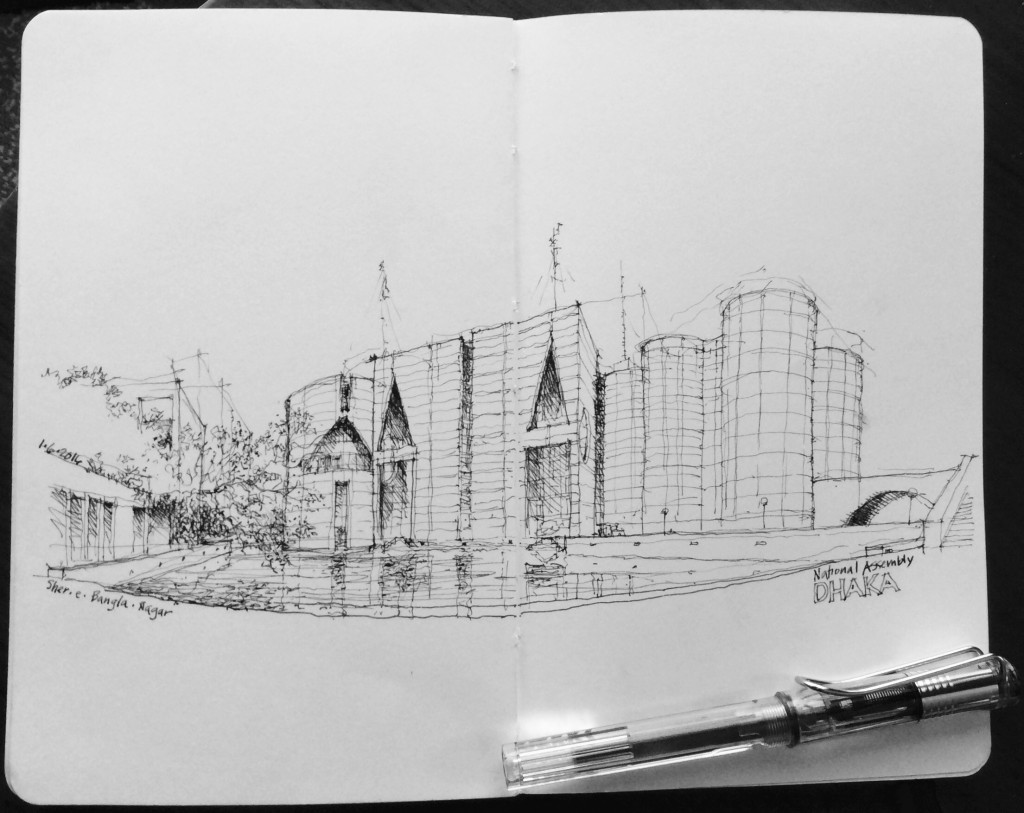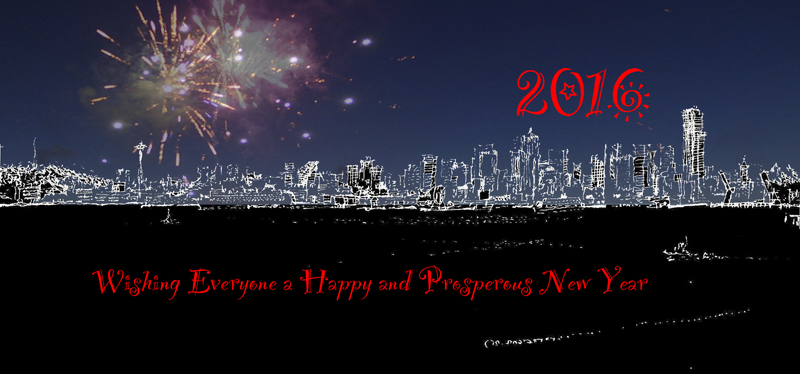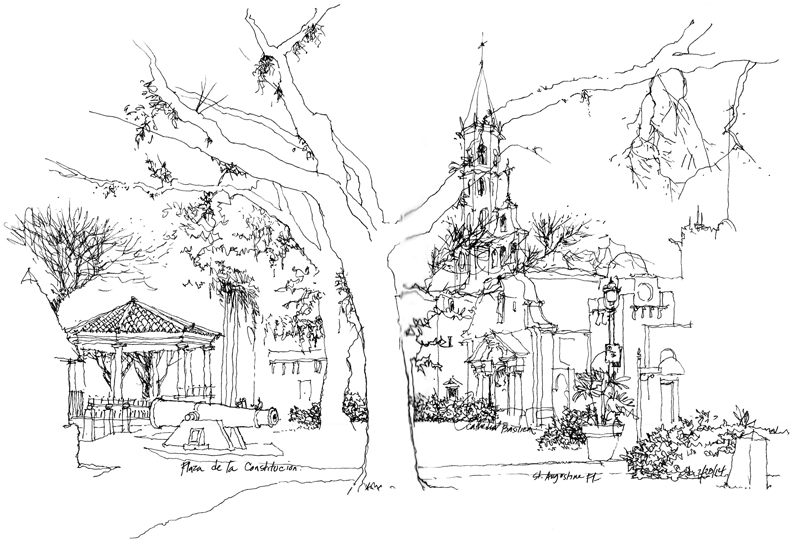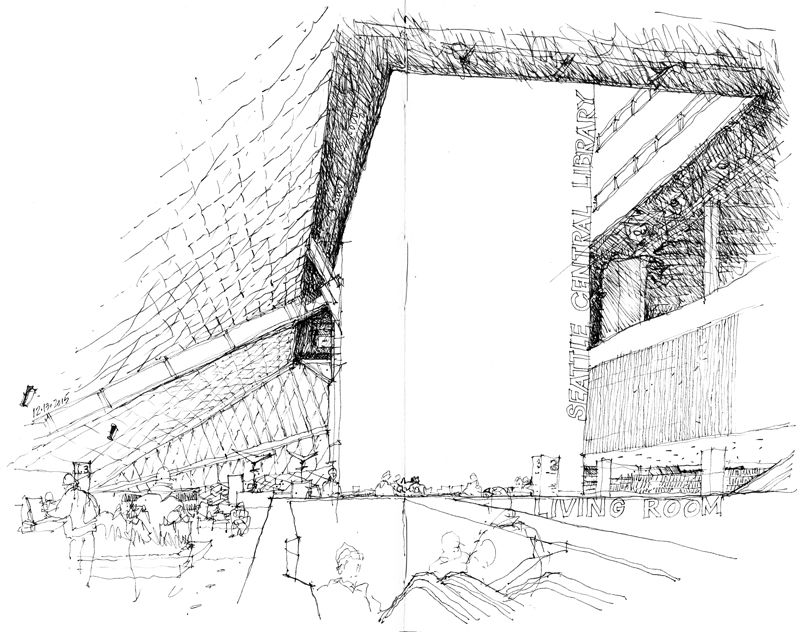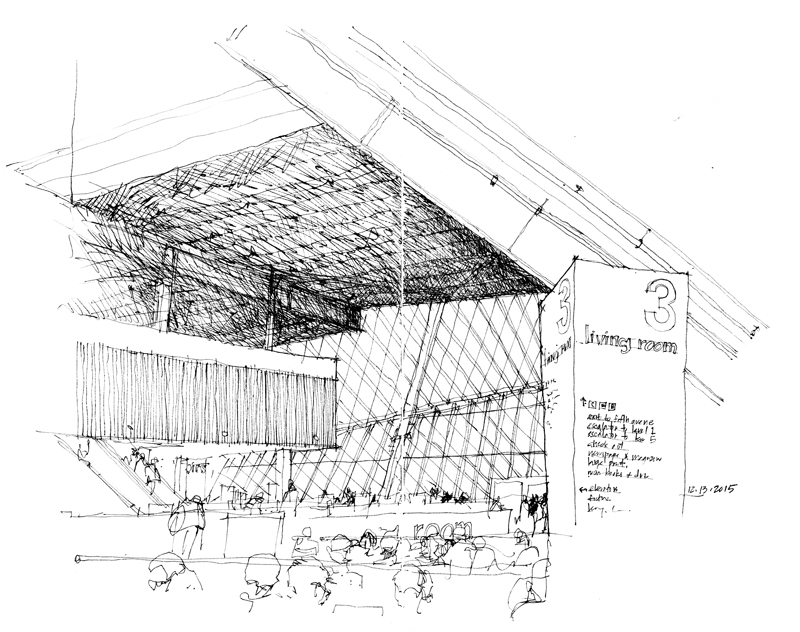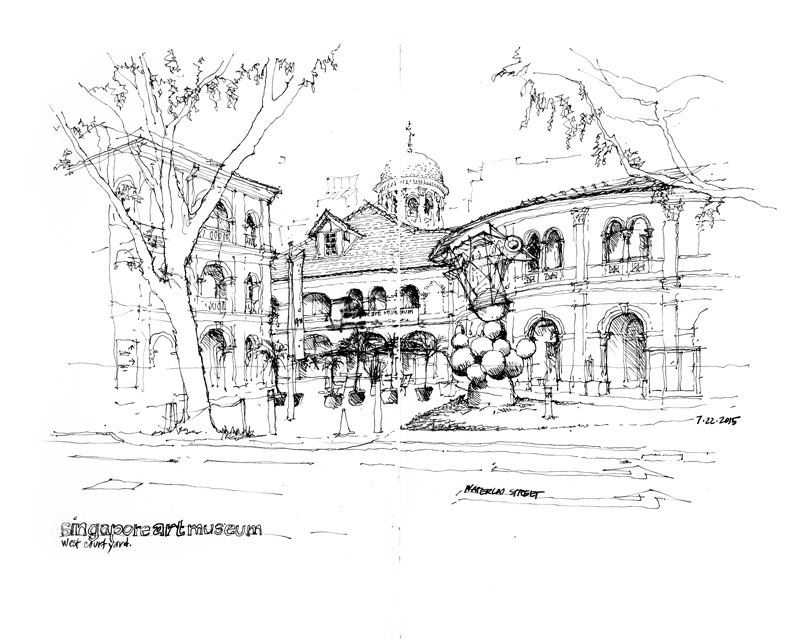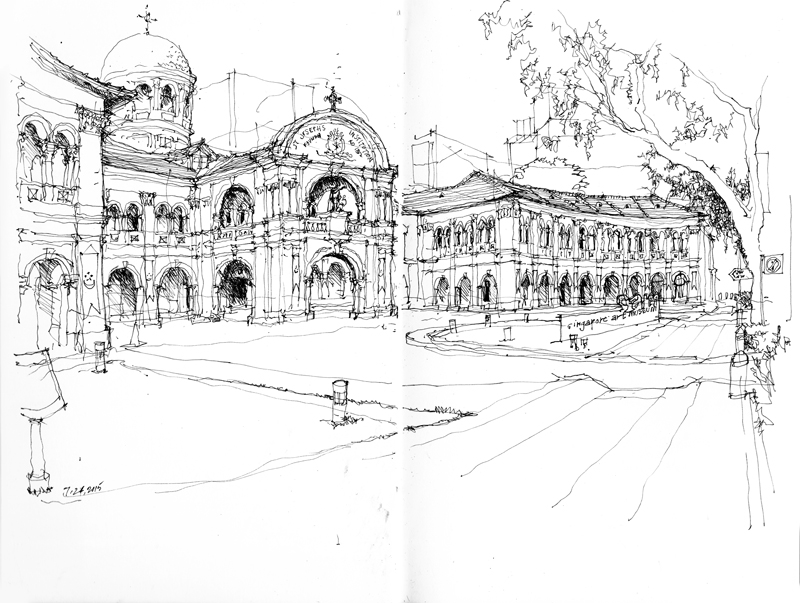Lining Dihua Street in the Datong District of Taipei are historical shophouses, many of which are selling Chinese herbs and medicines, especially for the upcoming Chinese New Year festivities. The 19th-century shophouse is characteristic of many Southeast Asian cities, combining a shop or working space facing the street with living quarters either above or to the rear of a deep, narrow lot.
The Lin Shophouse, built in 1851, is said to be the first shophouse along Dihua Street. I first drew a partial section of the front “shop” part of the structure as I walked through the spaces and then sketched an overview of the complex showing how the shop space faces the street and is separated by a courtyard from the living quarters in the rear. In the street view, one hardly notices the Lin Shophouse as it has been obscured by later shophouses that rose two or three stories high, with Baroque-style facades that were popular during Japan’s Taisho Period.

